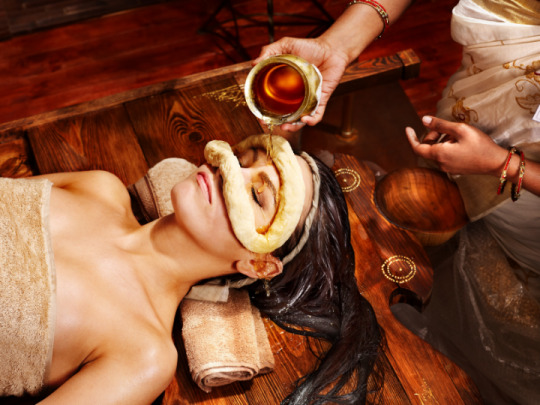#best ayurvedic diabetes type 2
Text
#ayurvedic treatment for diabetic patients#ayurvedic cure for diabetes#best ayurvedic diabetes type 2#diabetes treatment with ayurveda
0 notes
Text
Finest Ayurvedic Medicine for diabetes Type 2 | Noni D Care
Noni D Care is an ayurvedic medicine for diabetes type 2 which not only controls your sugar level, but it also helps reduce inflammation, boost immunity and help restore the body's natural function. Using insights from Ayurveda, a traditional medicine system that has been used for thousands of years in India and across the world, along with modern scientific studies on the beneficial effects of our unique properties, we are proud to bring you this best ayurvedic medicine for diabetes.
For more information visit: https://www.nonidcare.com/ or mail
us at [email protected]
0 notes
Text
Best ayurvedic vitamins for diabetics type 2 – Vanesha
Vanesha Provides best multivitamin Supplements for High Blood Sugar in diabetics 2, herbs Supplements that lower blood sugar fast. Madhukar Nashini supplements help in controlling blood sugar levels by improving insulin sensitivity and reducing the carbohydrates level in the body. For more - https://vanesha.in/products/madhukar-nashini
#organic diabetic control supplements#best ayurvedic vitamins for diabetics type 2#Herbal blood sugar reducing supplements#best multivitamins for diabetics#herbs Supplement that lower blood sugar fast#best supplements to lower blood sugar#herbs to lower blood sugar naturally#best diabetes supplements#herbs to lower blood sugar
0 notes
Text
PCOD / PCOS
PCOS, or Polycystic Ovarian Syndrome, has become increasingly common among women of reproductive age in recent years. Women who have this condition may have irregular or altered menstrual cycles. The ovaries may also grow a lot of fluid-filled sacks that are incapable of releasing eggs. An endocrine disorder called PCOS/PCOD is a major contributor to infertility. Subfertility is a term used to describe a condition where a person is trying to get pregnant but is having a difficult time.
Best Ayurveda treatment for PCOD and PCOS
SYMPTOMS OF PCOS/PCOD
These are some of the typical PCOS/PCOD symptoms.
Period irregularities: Women may experience irregular menstrual cycles.
Missed Periods: Missed periods may occasionally last a long time. This may continue for several months.
Severe bleeding: This is caused by a thicker than usual uterine lining. Females can have prolonged periods of heavy bleeding.
Hair growth: The back, belly, chest, and face may all experience excessive hair growth. This ailment, also known as hirsutism, can be an annoying PCOS symptom.
Acne: Areas like the face, chest, and back are more likely to experience breakouts.
Obesity: Studies have shown that managing one’s weight can significantly lessen the symptoms of PCOS in up to 80% of females who have the condition.
Hair thinning and loss: Women with PCOS/PCOD may experience hair thinning and loss. The body’s overabundance of androgens is the cause of this.
Skin darkening: The nose, groin, under the breasts, and other places may develop dark skin pigmentation or patchy skin growth.
Headaches: A hormonal imbalance known as PCOS or PCOD can occasionally result in headaches.
Pelvic pain and fatigue: Women with PCOS may experience feelings of discomfort, such as pain in the pelvic area, along with fatigue.
REASONS BEHIND PCOS
High levels of androgen
A woman’s body contains a small amount of male hormones known as androgens. However, in PCOS, the amount of male hormones increases, which can prevent the ovaries from producing eggs during the monthly menstrual cycle. This can cause acne and excessive hair growth in women, which is one of the main symptoms of PCOS.
High levels of insulin
The insulin hormone is in charge of regulating the body’s glucose levels. PCOS is a condition in which many women have insulin resistance, which means that the glucose in the blood is not being used properly by their cells. Women are more likely than men to have a family history of Type 2 Diabetes. To avoid Type 2 Diabetes in the future, lifestyle changes are advised.Obesity and unhealthy lifestyle leads to PCOS
AYURVEDIC APPROACH TO PCOD/PCOS / Best Ayurveda treatment for PCOD and PCOS
According to the ancient texts of Ayurveda, it is referred to as “Granthi” in some cases, which refers to the development of abnormalities such as cysts, ulcers, lumps, or tumors. According to Ayurveda, PCOS is caused by imbalance of Rasa and Rakta Dhatus, as well as an imbalance in the three Doshas of the body (Vata, Pitta, and Kapha). These Rasa-Rakta Dhatus are weakened as a result of Dosha imbalance and Ama (toxins) buildup in the body. This can result in cyst formation and other PCOS symptoms.
Normally, the Vata Dosha dominates the reproductive system, and the female reproductive organs are made of “Artava Dhatu,” which nourishes the ovum. Vata Dosha is in charge of the follicle and ovum movement into the uterine fallopian tubes. The sub-dosha “Apana Vayu” is in charge of the downward flow or menstrual flow. Pitta Dosha is important for hormone production and balance in the body. The Kapha Dosha is in charge of nourishing and promoting follicle, uterine, and ovum tissue growth. As a result, a harmonious balance of the three Doshas is essential for producing healthy hormones and maintaining the health of the female reproductive system.
Best Ayurveda treatment for PCOD and PCOS
Ayurveda, as a holistic system of treatment, provides an all-encompassing treatment approach that addresses the underlying cause of this condition. This treatment can be tailored to an individual’s needs, and it is always best to consult an Ayurvedic expert before beginning any treatment or therapy. The goal of Ayurveda Treatment for PCOD is to-
Ayurvedic detoxification of the body to remove accumulated toxins
The female reproductive system should be strengthened, revitalized, and nourished.
Maintaining the body’s hormonal balance
Weight loss and insulin resistance correction
AYURVEDA DIET FOR MANAGING PCOS/PCOD SYMPTOMS:
The goal of following this Ayurvedic diet is to nourish the Aartava Dhatu in females.
Organic fruits and vegetables, such as raisins, pears, plums, dates, and figs, should be consumed by PCOS women. Fruits and berries in season should be included in the diet.
To boost the Agni (Digestive fire), avoid spicy foods, fermented foods, dairy products, buttermilk, and so on.
Consume Ragi (nachini, Eleusine coracana) grains.
Avoid taking added sugar or sugary foods, as well as artificial sweeteners.
AYURVEDA TREATMENT FOR PCOD INVOLVES-
Herbs like Ashwagandha, Turmeric, Shatavari, Varuna, Haritaki, Pippali, Bilva, Agnimantha, Punarvana, Guduchi, Chitraka, Shunthi, Dashmool, Shatapushpa, and others are very effective for balancing the tridoshas and Dhatus.
Panchakarma, ayurvedic therapies, Yoga and breathing exercises (Pranayama) . Dietary changes include increasing the consumption of fruits, vegetables, and whole grains while decreasing the consumption of saturated fats, salt, refined sugar, and refined carbs.
Varunadi Kashaya, Chitrakadi Vati, Triphala Guggulu, Punarvadi Kashaya, Shatavari Gulam, and other Ayurvedic formulations are effective.
PANCHAKARMA TREATMENT FOR PCOS/PCOD / Best Ayurveda treatment for PCOD and PCOS
Panchakarma Treatment is recommended to treat the underlying cause by removing toxins from the reproductive system and empowering the various organs such as the uterus, ovaries and Fallopian tubes. This Panchakarma Treatment also aids in the maintenance of the body’s hormonal balance.
Vamana
This is a cleansing technique used primarily to expel vitiated ‘Kapha.’ In PCOS, Vamana (therapeutic emesis or therapeutic vomiting) process helps to balance the vitiated kapha dosha.
Virechana
This therapy aids in the restoration of the vitiated Pitta Dosha. It involves cleansing the small intestine and improves Dosha elimination via the rectal route. It restores the female body’s hormonal balance.
Basti (Vastu)
This panchakarma therapy, which uses various types of herbal oils, Ghruta, milk, and other decoctions, is extremely effective in balancing the vitiated Vata Dosha. When specific oils are used for Basti, it aids in the regularisation of ovulation. So, Basti can help with infertility treatment, hormone balancing, PCOS treatment, fallopian tube blockage removal, and so on.
Uttarbasti (Vasti)
Uttarbasti (Vasti) is a highly effective treatment for gynecological conditions. In the case of PCOS, Uttarbasti aids in the dissolution of ovarian cysts, the flushing of the Aartava Vaha Srotas, the pacification of the vitiated Apana Vayu, and the increase of follicular maturity.
Fertility Massage
This is a gentle massage of the lower abdomen performed in a specific pattern to improve the natural functioning of the uterus. It also improves blood circulation in the lower pelvic region.
2 notes
·
View notes
Text
Best Ayurvedic Skin Care Products: A Natural Approach to Healthy Skin
Ayurveda, the ancient science of life, has gifted us with remedies that work in harmony with our body’s natural processes. For centuries, Ayurvedic skin care has been synonymous with glowing, healthy skin. The holistic approach addresses the root causes of skin issues, focusing on balance and overall well-being. With the rise of natural beauty products, Ayurvedic skincare has gained immense popularity. Here, we explore some of the best Ayurvedic skin care products that help you achieve radiant skin, naturally.
1. Felixoveda Face Serum
Felixoveda is an emerging name in the world of Ayurvedic skincare, offering solutions derived from ancient wisdom combined with modern formulations. The Felixoveda Face Serum is a must-have in your skincare routine. Packed with potent herbs like saffron, turmeric, and sandalwood, this serum helps reduce blemishes, pigmentation, and fine lines. What sets it apart is its lightweight, non-greasy texture that suits all skin types.
Key Benefits:
Brightens complexion
Reduces dark spots and pigmentation
Provides deep hydration
Suitable for sensitive skin
2. Kumkumadi Tailam
Kumkumadi Tailam is one of the most revered oils in Ayurvedic skincare. Infused with saffron, licorice, and lotus extracts, this luxurious oil works wonders for dull and damaged skin. Regular use can help diminish signs of aging, improve skin texture, and leave you with a natural glow. Many consider Kumkumadi Tailam as a miracle elixir for youthful skin.
Key Benefits:
Fades acne scars and hyperpigmentation
Nourishes dry skin
Provides anti-aging benefits
Improves skin elasticity
3. Aloe Vera Gel with Tulsi & Neem
Aloe vera has long been known for its skin-soothing properties, while Tulsi (holy basil) and Neem add antibacterial and anti-inflammatory benefits. This Ayurvedic combination can work wonders for acne-prone skin. The cooling effect of aloe vera helps to calm irritated skin, while Tulsi and Neem fight off acne-causing bacteria.
Key Benefits:
Soothes inflamed skin
Controls excess oil production
Reduces acne and pimples
Heals sunburns
4. Ubtan (Ayurvedic Scrub)
Traditionally, Ubtan has been used in Indian households as a natural exfoliating treatment. Made from a blend of gram flour, turmeric, sandalwood powder, and rose water, this Ayurvedic scrub gently removes dead skin cells, detoxifies the skin, and enhances the skin’s natural radiance. It’s perfect for a weekly self-care ritual.
Key Benefits:
Gently exfoliates skin
Improves blood circulation
Reduces tan and pigmentation
Evens out skin tone
5. Chandan (Sandalwood) Face Pack
Sandalwood is a cooling and calming agent that has been used in Ayurvedic remedies for ages. The Chandan Face Pack is an excellent choice for anyone dealing with sensitive or irritated skin. It helps in controlling excess sebum, reducing acne scars, and improving overall skin complexion.
Key Benefits:
Reduces acne and blemishes
Controls oil production
Provides a cooling effect
Brightens skin tone
A Holistic Approach to Skincare
Ayurveda emphasizes the importance of not just external treatments but also internal health. This brings us to another product that plays a dual role in both skincare and overall health – Ayurvedic Medicine for Diabetes. Maintaining healthy blood sugar levels is essential for preventing issues like dry skin, which is often a side effect of diabetes. Ayurvedic medicine for diabetes, such as Felixoveda's herbal formulations, can help regulate glucose levels while promoting holistic well-being. By addressing internal imbalances, these medicines can also indirectly contribute to healthier, more vibrant skin.
Conclusion
Ayurvedic skin care products not only provide external nourishment but also align with the body’s inner balance. By using natural, chemical-free products like those from Felixoveda, and supporting your health with Ayurvedic medicine for diabetes, you can achieve glowing skin from the inside out. Embrace the wisdom of Ayurveda for healthier, radiant skin and overall well-being.
1 note
·
View note
Text
What Is Inflammation?
Inflammation, commonly referred to as "swelling," is the body's defensive response to stimuli, typically characterized by redness, swelling, heat, pain, and functional impairment. Inflammation can be acute or chronic. Acute inflammation is usually beneficial. When you sprain your ankle or catch a cold, the body sends out a large number of white blood cells to help heal the injury or capture harmful bacteria. During this process, you might experience redness, warmth, tenderness, or swelling.
Chronic inflammation, on the other hand, occurs when the body continues to send out signals and produce white blood cells to fight off infection or injury even when no danger is present. These cells may start attacking healthy cells and tissues, leading to chronic inflammation. Chronic inflammation increases the risk of conditions like cancer, heart disease, rheumatoid arthritis, type 2 diabetes, and degenerative brain diseases such as Alzheimer's disease.
Causes of Inflammation:
Environmental Factors:
Air pollution
Industrial hazardous waste
Chemicals
Lifestyle Factors:
Lack of sleep
Irregular routines
Lack of exercise
Psychological stress
Dietary Factors:
Processed sugars
Refined carbohydrates
Trans fatty acids
Gluten
Food additives and preservatives
The occurrence and progression of inflammation are closely related to free radicals. Consuming foods high in free radicals, exposure to polluted air, excessive sugar intake, and lack of exercise can lead to an increase in free radicals in the body, thereby exacerbating inflammation. Conversely, inflammation can also stimulate the production of free radicals, creating a vicious cycle, which is how chronic inflammation develops.
Anti-Inflammatory Agents:
Omega-3 Fatty Acids:Omega-3 fatty acids are polyunsaturated fats. DHA and EPA, two of the three main omega-3s, are primarily found in seafood like sardines, fresh fish, tuna, and krill, as well as in algae. The best source of the third major omega-3, ALA, includes certain nuts, seeds, and plant oils like flaxseed oil, soybean oil, and canola oil.
Turmeric/Curcumin:Curcumin is a natural anti-inflammatory agent with strong antioxidant properties. Research shows that it offers various health benefits and may help manage a range of oxidative and inflammatory conditions, including metabolic syndrome and osteoarthritis.
Ginger:Ginger naturally contains antioxidants and may have antibacterial and anti-inflammatory properties that support the immune system. Studies suggest that the bioactive compounds in ginger may help alleviate issues caused by inflammation, such as the severity of ulcerative colitis, Crohn's disease, rheumatoid arthritis, and chronic pain.
Piperine:Piperine, a component found in black pepper, may help enhance the absorption of other important nutrients. From iron to beta-carotene to curcumin, in Ayurvedic medicine, the combination of long pepper, black pepper, and ginger, known as Trikatu, is believed to work synergistically to reduce inflammation.
Vitamin D:Vitamin D is well-known for its role in strengthening bones, but a study published in the International Journal of Epidemiology found a direct link between low levels of vitamin D and high levels of inflammation. When researchers examined the health data of nearly 300,000 people, they found that low levels of vitamin D may help identify individuals at higher risk of chronic diseases with an inflammatory component. The findings also suggest that increasing vitamin D intake in those who are deficient may help reduce chronic inflammation.
Quercetin:This plant pigment, found in onions, is a flavonoid compound that acts as an antioxidant, helping to protect cells from damage. In addition to its antioxidant potential, some research suggests that quercetin may also act as a cellular brake, preventing the proliferation of inflammatory cells and enzymes.
Synbiotics:The presence of certain bacteria in the gut may lead to several inflammation-related diseases, including type 2 diabetes, inflammatory bowel disease (IBD), and rheumatoid arthritis. Synbiotics are foods or dietary supplements that combine probiotics (promoting healthy bacteria) with prebiotic fibers that help these bacteria thrive.
Apigenin:Apigenin is a type of flavonoid, a class of plant chemicals found in plant tissues that help plants during pathogen attacks and sunlight exposure while attracting pollinators and regulating plant metabolism. It is present in a variety of fruits, vegetables, and herbs. When taken as a supplement, it exhibits anti-inflammatory effects and antioxidant properties.
0 notes
Text
Gluco Bliss: Your Path to Balanced Blood Sugar and Optimal Health

Gluco Bliss: Your Path to Balanced Blood Sugar and Optimal Health
Maintaining balanced blood sugar levels is crucial for overall health and well-being. With modern diets often high in refined sugars and carbohydrates, many people struggle to keep their blood sugar in check. Enter Gluco Bliss, a natural supplement designed to support healthy blood sugar levels, enhance energy, and promote overall vitality.
What Is Gluco Bliss?
Gluco Bliss is a dietary supplement formulated with a blend of natural ingredients known for their blood sugar-regulating properties. It aims to provide a holistic approach to managing blood sugar levels, reducing the risk of spikes and crashes that can lead to fatigue, mood swings, and long-term health issues.
The Importance of Blood Sugar Balance
Balanced blood sugar levels are essential for:
Stable Energy Levels: Preventing the highs and lows that come with blood sugar fluctuations.
Weight Management: Reducing cravings for sugary and high-carb foods.
Mental Clarity: Avoiding the brain fog that often accompanies blood sugar dips.
Overall Health: Lowering the risk of developing chronic conditions such as type 2 diabetes and cardiovascular disease.
Key Ingredients in Gluco Bliss
Gluco Bliss harnesses the power of several potent ingredients known for their ability to support healthy blood sugar levels:
Berberine: A natural compound found in several plants, berberine has been shown to improve insulin sensitivity and lower blood sugar levels.
Cinnamon Bark Extract: Known for its ability to mimic insulin and increase glucose uptake by cells, cinnamon helps in maintaining stable blood sugar levels.
Chromium: An essential trace mineral that enhances the action of insulin and aids in glucose metabolism.
Gymnema Sylvestre: An herb traditionally used in Ayurvedic medicine, Gymnema helps reduce sugar absorption in the intestines and improves glucose utilization.
Alpha Lipoic Acid: A powerful antioxidant that helps improve insulin sensitivity and supports nerve health, particularly in individuals with diabetes.
Benefits of Gluco Bliss
Balanced Blood Sugar Levels: Gluco Bliss helps to maintain stable blood sugar levels, preventing the spikes and crashes that can affect energy and mood.
Enhanced Energy: By stabilizing blood sugar, Gluco Bliss provides a steady supply of energy throughout the day.
Reduced Cravings: The ingredients in Gluco Bliss help to curb cravings for sugary and high-carb foods, supporting weight management.
Improved Insulin Sensitivity: The supplement enhances the body’s ability to use insulin effectively, which is crucial for blood sugar management.
Overall Wellness: Regular use of Gluco Bliss can contribute to better overall health, reducing the risk of chronic conditions associated with poor blood sugar control.
How to Use Gluco Bliss
Gluco Bliss is easy to incorporate into your daily routine. Typically, it is recommended to take the supplement with meals to maximize its effectiveness. Consistent use is key to achieving the best results, so taking it at the same time each day is beneficial.
Who Can Benefit from Gluco Bliss?
Gluco Bliss is ideal for:
Individuals with prediabetes or type 2 diabetes looking to support their blood sugar management.
Those experiencing frequent energy crashes or sugar cravings.
People seeking a natural approach to maintaining healthy blood sugar levels.
Anyone interested in enhancing their overall health and well-being through better blood sugar control.
Conclusion
Gluco Bliss offers a natural and effective way to support balanced blood sugar levels, improve energy, and enhance overall health. With its carefully selected blend of ingredients, Gluco Bliss provides a holistic approach to managing blood sugar, making it a valuable addition to your daily wellness routine. Take control of your blood sugar and embark on a journey to better health with Gluco Bliss.
you can also try this
Disclaimer
There is an affiliate link attached of the best product which may help me to make some profit
0 notes
Text
Ayurvedic Gut Wellness Products: A Natural Solution for Digestive Health
Maintaining intestinal health might be difficult in the fast-paced world of today. Our digestive systems can suffer greatly from the modern diet, which is frequently heavy in processed foods and chemical substances. Here's where GUTAVATAR's line of Ayurvedic gut wellness products comes in handy. These products offer a natural and entire approach to digestive health. It is because they are made with the best components, including superfoods, herbs, and seeds.

As we explore how GUTAVATAR products can improve your digestive health, let's take a closer look at the benefits of Ayurvedic gut wellness products.
Your stomach digests meals and absorbs nutrients to keep your body functioning.
Every organ in our body is impacted by our gut flora, according to research
It is recognized that there are connections between the immune system and gastrointestinal health
Autoimmune disorders and mental health
Gastrointestinal problems, including irritable bowel syndrome and inflammatory bowel disease
Endocrine disorders like type 2 diabetes
Cancer, heart disease, and sleep digestion
An essential measure of the health of your microbiome is the diversity of your gut flora
Signs of an unhealthy gut
Stress, insufficient sleep, inactivity, and an excessive intake of highly processed meals. Also, it impacts your gut microbiome.
Consuming alcohol, smoking, and using antibiotics.
The gut microbiome is also influenced by factors outside of our control, including how we were raised, age, mode of birth, and whether we were bottle- or breastfed as infants. Although there isn't a single test we can take to determine our gut health. There are a few indicators that you might not be in good health:
Ways to strengthen your digestive system
Changes in food and lifestyle may help you achieve better gut health.
Foods high in dietary fibre can help maintain regularity and lower the risk of colon cancer. Additionally, they nourish the good bacteria in our stomachs, all of which contribute to improved gut health.
Fruits, vegetables, legumes, whole grains, nuts, and other whole foods may stop some germs that cause inflammation and illness from growing.
Our way of life, which includes exercise, restful sleep, and lowering stress levels. Is also beneficial to gut health.
Diet and gut health
What you consume affects the microorganisms in your gut. To maintain a balanced gut microbiome, it's critical to provide them with the proper nutrition. Eating a variety of fresh, whole foods, primarily from plant sources, including fruits, vegetables, legumes, beans, nuts, and wholegrains, is the greatest way to keep your microbiome healthy.
Benefits of GUTAVATAR Gut Wellness Products
You can get a number of health advantages by including Ayurvedic gut wellness products in your regular regimen:
Enhanced Digestion: This mixture of herbs and seeds improves digestive processes and lessens bloating, gas, and indigestion.
Nutritional Absorption: When digestion is improved, your body will absorb nutrients more effectively and obtain the vitamins and minerals it requires.
Detoxification: Components like coriander and neem leaves aid in the cleansing of the digestive tract, eliminating toxins and fostering a healthy environment in the gut.
Frequent Bowel Movements: Constipation can be avoided by consuming high-fiber components that promote regular bowel movements, such as flax seeds.
Anti-inflammatory Effects: Curcumin and other anti-inflammatory components aid in reducing intestinal inflammation and enhancing gut health in general.
Immune Support: GUTAVATAR products and a healthy gut are essential for a robust immune system.
How to Use Products with GUTAVATAR?
GUTAVATAR products are easy to include in your diet. Depending on the product, you can drink them as teas. Meanwhile, incorporate Ayurvedic gut wellness products into your meals, or take them as supplements. Consistent use will yield the best effects and help maintain a healthy and balanced digestive system.
Conclusion
GUTAVATAR Ayurvedic gut wellness products provide a natural and efficient way to support optimal digestive health, which is crucial for overall well-being. Through the utilization of potent Ayurvedic components such as fennel, cumin, amla, coriander, and others. These products help to improve and maintain the digestion process. Experience the advantages of a balanced and healthy gut by embracing the natural route to digestive health with GUTAVATAR.
#AyurvedicGutHealth#DigestiveWellness#NaturalDigestion#GutHealthBenefits#AyurvedicHerbs#HealthyGut#DigestiveDetox
0 notes
Text
Prime Ayurvedic Unani Formulas for Weight Control

Product:-ArqDasharam 500 ML
Primary keyword-Best Ayurvedic Medicine for Weight Loss
Meta Title- Prime Ayurvedic/Unani Formulas for Weight Control
Meta Description-
There aremany reasons for weight gain:
Eating unhealthy &fastfood, excessive alcohol consumption, not doing physical activities, not getting enough sleep, genetic factors.
Apart from these, these reasons can also be the reason for weight gain:
Tension, PCOS problem, Thyroid problem, Sitting for long periods of time, Insufficiency of water, Hormonal changes
Some signs of weight gain: feeling constantly tired, feeling very hungry, having trouble breathing, feeling anxious and irritable.
These methods can be adopted to lose weight: Drink plenty of water, Stay away from sugar, Increase protein intake, Start walking, Increase the amount of fiber in food, control oil in food, Chew food slowly, Don't skip meals.
What is the main reason for increasing body weight?
Obesity can occur at any age,It can be in young children. But as you age, hormonal changes and a less active lifestyle increase the risk of obesity. With age, the amount of muscles in your body also starts decreasing. Decreased muscle mass often results in decreased metabolism.
There are some major diseases that can occur due to weight gain:
Heart Disease: Excess weight increases the risk of heart disease, such as high blood pressure, heart attack, and stroke.
High Blood Pressure (Hypertension): Excess weight increases blood pressure, which increases the risk of heart disease and stroke.
Type 2 Diabetes: People who are overweight have an increased risk of diabetes. This happens due to lack of insulin or misuse of insulin.
Joint Problems: Excess weight can cause pain in the joints and knees. It can also cause osteoarthritis.
Depression and Anxiety: Gaining weight can make a person more likely to face stress and anxiety, which can cause depression and anxiety.
Digestive Disorders: Weight gain can also lead to stomach related problems, such as acid reflux, fatty liver, or gallbladder disease.
Cancer: According to some research, being overweight increases the risk of certain types of cancer, such as breast cancer, colorectal cancer, and uterine cancer.
There are some main solutions to control weight:
Balanced Diet: Consume nutritious diet, which is rich in nutrition and low in calories. Daily vegetables, fruits, sprouted grains, lentils, curd, and protein rich food are included.
Exercise and Yogasan: Do regular exercise, like walking, cycling, swimming, or aerobics. Exercise increases metabolism and decreases fat. Yoga also improves the body and helps in controlling weight.
Avoid Junk Food: Reduce the intake of fast food, processed food, sweets, and high-calorie snacks. These contain more calories and less nutritional value.
Stress Management: Stay away from stress and worry. Adopt meditation, pranayama, and relaxation techniques.
Ayurvedic/Unani Treatment for weight control:
CipzerArqDasharam is a proprietary Unani medicine made using a combination of herbs used in anti-inflammatory, analgesic, anti-bacterial, hepatoprotective, diuretic, anti-dysentric, appetizer, astringent, cathartic, cholagogues and demulcent. It contains Ajwain, Tukhm-E-Kasni, Zeera Black
Consult the Doctor: If you have any specific weight gain conditions, consult a specialist for personalized advice and treatment options.
By following these tips, you can help protect yourself from diasesesand maintain a healthy lifestyle.
0 notes
Text
Herbal blood sugar reducing supplements - Vanesha
Madhukar Nashini tablet is a combination of well researched herbs in Ayurveda, which have been used since ages to lower down the elevated blood sugar level and also to tackle other symptoms of Diabetes Mellitus. For more - https://issuu.com/vanesha-ayurvedic/docs/herbal_blood_sugar_reducing_supplements_-_vanesha
#best multivitamins for diabetics#best ayurvedic vitamins for diabetics type 2#herbs Supplement that lower blood sugar fast#best supplements to lower blood sugar#organic diabetic control supplements#Herbal blood sugar reducing supplements#herbs to lower blood sugar naturally#best diabetes supplements#herbs to lower blood sugar
0 notes
Text

ayurvedic eye treatment in kerala
Diabetic Retinopathy Ayurvedic Treatment At Matha
Matha was the first ayurvedic hospital to chart out a new direction in ayurvedic treatment of diabetic retinopathy, which is now widely accepted and followed by all the ayurvedic physicians treating diabetic retinopathy.
Eye treatments at Matha have methods to preserve existing eyesight for diabetic retinopathy conditions. DR is caused due to prolonged high blood glucose levels. In diabetic eye disease, abnormal blood vessels develop that can break, bleed, and leak fluid. Sometimes tiny bulges called microaneurysms may protrude from the vessel walls. This leads to leakage or oozing of fluid and blood into retina. This fluid causes edema in the central part of macula leading to diabetic macular edema. Regaining the lost ability to see depends on the clinical stage when a patient starts treatment. It is always important for a patient to start treatment as early as possible. It is also very important to maintain blood glucose, blood pressure and blood cholestrol levels. ayurveda treatment for diabetic retinopathy takes around 14 to 16 days. The clinical-stage when medications are started is a very crucial factor. know more about ayurveda treatments for diabetic retinopathy.
Systematic ayurvedic cure for diabetic retinopathy has three benefits:
It prevents the onset
It preserves the existing vision
It regains lost vision.
The stage when a patient starts treatment is very crucial. The outcome of treatment depends on it. This condition develops in anyone who has type 1 or type 2 diabetes. Type 1, is also known as insulin-dependent diabetes. It is characterized by beta-cell destruction. It leads to absolute insulin deficiency. On the other hand, Type 2 is characterized by insulin resistance. This may be due to an insulin secretory defect that may lead to relative insulin deficiency. The longer a person has diabetes and the less controlled his blood sugar is more likely are his chances to develop this eye complication. Diabetes mellitus destructs tissue surrounding the retina, including optic nerves. Retinopathy impairs optic nerves by damaging its conduction as well as integrity.Earlier the treatment, better the results. Matha had identified Diabetic Retinopathy as a core focus area right from its inception. Matha is the first ayurvedic treatment centre to introduce a protocol for the specialized screening, prevention, and treatment program for diabetic retinopathy.
youtube
Systematic ayurvedic cure for diabetic retinopathy
Eye treatments at Matha have methods to preserve existing eyesight for diabetic retinopathy conditions. Matha is the first ayurvedic treatment centre to introduce a protocol for the specialized screening, prevention, and treatment program for diabetic retinopathy.
Our focus is on providing the best ayurvedic treatment to patients
Our facilities are designed and built for middle class Indian patients.
Our Kitchen provides veg diet suitable for ayurveda and yoga.
Matha is not a research Institute. We do not conduct research on our patients.
We prepare herbal medications in our own GMP certified manufacturing unit.
Book Your Consultation Now

There are two typical types of retinopathy. They are Non-proliferative diabetic retinopathy (NPDR) and Proliferative diabetic retinopathy (PDR).
Non-proliferative diabetic retinopathy (NPDR)
NPDR (Non-proliferative diabetic retinopathy) is milder than PDR. Here, the blood vessels become congested. The blood flow slows down. Vessel walls become thickened most by deposits. Changes to properties of the vessel wall contribute to this thickening. Blockages also develop in the blood flow. This develops Branch retinal venous occlusion (BRVO) or Branch artery occlusion. Here, high cholesterol (hypercholesteremia) is also an extra contributing factor. This occlusion may also happen in the central retinal artery. This specific condition is Central retinal artery occlusion. If it happens in the central retinal vein, it is central retinal venous occlusion (CRVO).
CRVO is very serious and the patient may feel a sudden loss of vision. In NPDR, there will be a tendency for small haemorrhages. Small dots and blots of haemorrhages are also seen in most cases. Here, there is an involvement of Kapha also. Actually, Kapha is vitiating pitta and raktha.
The very characteristic properties of Kapha increases. These are Snigdha, guru, pichila etc. and this, in turn, affect pitta. Hence, the characteristic properties of pitta get damaged. The Sara and Drava properties of pitta and raktha become decreased. So, the changes mentioned above develop. Sedentary lifestyles, lack of exercise, and excessive sleep increase the properties of Kapha. Daytime sleep, excessive intake of curd, deep-fried items, etc. also increases Kapha. Vitiation of pitta happens by this Kapha and thereby raktha. This affects consistency and the free flow of blood. There will be deposits on blood vessels and blockages in the veins or arteries of the retina. Here, treatment aims to control Kapha dominance and protect the properties of pitta. Moderate physical exercise (other than head down postures) is very good. Using suitable oil for head massage and nasal drops etc are very good.
Doctors use medicines in the form of Eyewash and eye drops. Triphala, Yashti, Darvi etc are very good for the preparation of eyewash and drops. In diet, avoid all types of heavy and oily food. Instead, add Steamed vegetables, leafy vegetables, sprouted pulses. Systematic ayurvedic management protects against visual impairment in this stage. But it should be by an expert hand only.
youtube
PDR (Proliferative diabetic retinopathy)
In PDR, there will be leakages and haemorrhages from the blood vessels of the retina. In severe conditions, it may penetrate into the vitreous (vitreous haemorrhage). Here, the vitreous fluid also becomes spoiled. As a result of vast haemorrhage, there will be hypoxia (anemia) of the retina. These damages the function of retinal cells. New collateral blood vessels may develop to compensate for the hypoxia. This condition is neovascularization. But these blood vessels may be very weak leading to easy bleeding. This makes the situation worse.
In PDR, there will be blood clot deposits on the retina. Here, pitta and raktha are the dominant factors. Factors that increase the properties of pitta is capable of developing this stage. Examples are working on laptop and mobile screen for a long time. Working late nights and lack of sleep also support the development of this stage. Exposure to bright light or sunlight is also dangerous. Exposure to excessive travel, especially in sunlight, etc. are not good.
In food habits, hot and spicy items are the worst. Deep-fried items, sour tasted items such as pickles are contributing factors. Pitta prakriti patients are more susceptible to PDR. External factors such as summer days, windy days, are also contributing factors. Even mental stress and strain are capable of developing PDR in a diabetic patient. There are situations when an NPDR can evolve to PDR. One instance is when NPDR takes more pitta dominant food items. Another instance is when an NPDR patient undergoes the above explained habitual factors.
Maculopathy is a condition where pathological changes get concentrated in the macular area. In maculopathy, there will be the encroachment of blood vessels to the macular area. Bleeding to the macula is also common. When there is an accumulation of edema fluid in the macular area, it becomes macular edema. Deposits in the macula is another common pathological change. Maculopathy is very very serious and vision loss is almost inevitable if not treated in time. In PDR, the foremost aim of management is to arrest the bleeding. For this, total physical rest is necessary. Never go for heavy physical exercise as a part of diabetic control. This is very important. Adopt only very mild and selective postures as per the direction of an expert. Avoid exposure to bright light and focus on light sources. Selective oil for head massage is very good.
The drugs used for the medication of this oil should have pitta samana properties. This is to control the dominance of pitta. Amla, useera, Chandana, yashti etc are examples. Among food items, avoid too sour tasted items. Too many spicy items are also dangerous. Fleshy and watery vegetables such as cucumber are preferable. Use Protein-rich vegetables and sprouted spices. Natural Cold drinks such as amla water are good for drinking purposes. Water boiled with useera, dry amla is also very good.
Here, systematic level ayurvedic treatment is necessary. Sirodhara, sirolepanam, netrasekam, vitalakam, etc are the treatment procedures. The medicines for these procedures should be very selective. An experienced ayurvedic ophthalmologist can decide it for you. This will help to protect your eyes and vision.
youtube
Three stages in ayurveda treatment of diabetic retinopathy
Matha was the first ayurvedic hospital to chart out a new direction in ayurvedic treatment of diabetic retinopathy, which is now widely accepted and followed by all the ayurvedic physicians treating diabetic retinopathy.
1
The first stage of diabetic retinopathy starts as a complication of diabetes mellitus. It has no warning signs before onset. Proactive diabetic patients undergo regular eye checkups. Even if they have no sight problems. This helps to identify symptoms even before the start of loss of visual perception. We have identified the initial symptoms of retinopathy from past treatment experiences. Mild headache and eye strain while reading is main among them. Strain while working on the computer and watching T.V come next. Fullness is a warning sign. So is the heaviness of head and eye, particularly in the early morning. Hypersensitivity to bright light and watering of the eyes are also typical symptoms. Getting the opportunity to start treatment at this early stage is valuable. It helps prevent the disease altogether. Matha follows proven ayurvedic treatments for diabetic retinopathy in this stage. According to ayurvedic science, this is the initial stage of Kapha predominance. It is also known as Nethrabhyshyandha. The line of treatment is sira-sodhanam. Treatments like Nasyam, Gandoosham, kablam, etc. are more preferable than ophthalmic applications.
2
The second stage of diabetic retinopathy happens if it is not controlled during the first stage. Extend of this progress depends on the various contributing factors, described earlier. From our experience, there are typical symptoms at this stage also. They are blurring of eyesight and metamorphopsia. Burning sensation in the eye and photophobia are also seen. The primary pathological change seen in this stage is the dilation of vessels. Retinal vessels become congested. Blockages happen in the microvascular system of the retina. Retinal edema, hemorrhages, exudates, and neovascular changes are also common. Treatments starting in the third stage concentrate on two distinct aspects. A primary aim is to preserve and protect the existing ability to see. The second aim is to regain lost vision. According to Ayurveda, pitta is the predominant dosha in this stage. Pittasamana must be the line of treatment. The treatments done are Sirodhara, netrasekam, vitalakam aschotanam, and thalam. Strict dietary restrictions are also needed. Medication and diet control are not enough at this stage. Other precautions and care are also needed. For e.g., habitual factors like head bath, sleep, journey and abhyanga oil application. Only an experienced ayurvedic ophthalmologist can do it. Systematic treatment at this stage avoids further vision loss and complications. Matha has successful treatments to protect the eyesight of affected patients.
Ayurveda treatment for diabetic retinopathy is a very wise mix of preventive and curative measures. during the first and second stages.
3
In the third stage, patients experience severe problems. Macular hole, retinal detachment, and other degenerative changes are main among them. The disease has now turned to a complication. This happens when retinopathy is not treated in the second stage. Continuation of etiological factors is another reason for proceeding to the third stage. Now, a strict line of treatment is not possible. Ayurveda treatment for diabetic retinopathy varies according to complications. For e.g., Retinal detachment can happen when abnormal blood vessels associated with diabetic retinopathy stimulate the growth of scar tissue, which pull the retina away from back of eye. For complications of detachment, treatment is on a Vata predominant approach. Pitta is an important treatment consideration for neo-vascularisation. For fluid accumulation, Kapha is the primary treatment factor. Systematic and high-level ayurvedic treatments are to be tailor-made for each specific complication. Confirmation of expected results happens only after a detailed assessment of the patient.
#yoga#backpain#kerala#ayurvedalifestyle#panchakarma#ayurveda treatment#ayurveda#diabetes#frozen shoulder#migraine#Youtube
0 notes
Text
Is Ayurvedic treatment suitable for all types of diabetes?

Ayurvedic treatment, an ancient system of medicine that originated in India, has gained popularity for its holistic approach to health and wellness. When it comes to diabetes, Ayurveda offers Best Ayurvedic Treatment For Diabetes a comprehensive framework that considers not only the symptoms but also the underlying imbalances in the body. While Ayurvedic treatment can be beneficial for many individuals with diabetes, it’s essential to understand that the effectiveness of the approach may vary from person to person. Additionally, individuals with diabetes must consult with their healthcare provider before making any significant changes to their treatment plan. In this article, we will explore the principles of Ayurveda in managing diabetes and discuss its suitability for different types of conditions.
Understanding Ayurvedic Principles
Ayurveda is based on the concept of balancing three doshas — Vata, Pitta, and Kapha — within the body to maintain optimal health. According to Ayurvedic principles, imbalances in these doshas can lead to various health issues, including diabetes. The treatment approach in Ayurveda involves restoring the balance of doshas through lifestyle modifications, dietary changes, herbal remedies, and practices such as yoga and meditation.
Different Types of Diabetes
There are primarily two types of diabetes: Type 1 and Type 2. Type 1 diabetes is characterized by the body’s inability to produce insulin, while Type 2 diabetes involves insulin resistance, where the body’s cells do not respond effectively to insulin. Ayurvedic treatment approaches can be adapted to address the unique characteristics of each type of diabetes.
Ayurvedic Treatment for Type 1 Diabetes
In Type 1 diabetes, Ayurveda focuses on strengthening the digestive system and supporting overall immune health. Herbal remedies may be recommended to enhance insulin production and regulate blood sugar levels. Additionally, stress management techniques, such as meditation and specific yoga postures, are often included to reduce the impact of stress on the body, which can be crucial for individuals with Type 1 diabetes.
Ayurvedic Treatment for Type 2 Diabetes
For Type 2 diabetes, Ayurvedic interventions typically aim at improving insulin sensitivity and reducing elevated blood sugar levels. Dietary recommendations focus on balancing the doshas, emphasizing whole foods, and incorporating specific herbs and spices known for their blood sugar-regulating properties. Lifestyle modifications, including regular exercise and stress reduction, play a significant role in managing Type 2 diabetes through Ayurveda.
Individualized Approach in Ayurveda
One of the key strengths of Ayurveda is its individualized approach to treatment. Ayurvedic practitioners consider the unique constitution of each person (Prakriti) and any existing imbalances (Vikriti) when creating a treatment plan. This personalized approach allows for a more targeted and effective intervention, taking into account factors such as age, lifestyle, and the severity of diabetes.
Herbal Remedies in Ayurveda
Ayurvedic herbal formulations are commonly used in the management of diabetes. Some herbs, such as bitter melon (Momordica charantia), fenugreek (Trigonella foenum-graecum), and guduchi (Tinospora cordifolia), have shown potential in improving insulin sensitivity and reducing blood sugar levels. However, it’s important to note that the use of herbal remedies should be supervised by a qualified Ayurvedic practitioner to ensure safety and efficacy.
Dietary Guidelines in Ayurveda
Online Ayurvedic Doctor Consultation recommendations for diabetes focus on balancing the doshas and regulating blood sugar levels. Emphasizing whole foods, including plenty of fresh vegetables, whole grains, and lean proteins, is common. Ayurveda also suggests avoiding or minimizing the intake of refined sugars, processed foods, and excessive consumption of sweet, sour, and salty foods, which are believed to aggravate imbalances in the body.
Lifestyle Modifications
In Ayurveda, lifestyle modifications are integral to managing diabetes. Regular exercise, particularly activities that promote balance and flexibility, is encouraged. Stress reduction techniques, such as mindfulness, meditation, and deep breathing exercises, play a crucial role in preventing and managing diabetes, as stress can negatively impact blood sugar levels.
Conclusion:
Ayurvedic treatment can be a valuable and holistic approach to managing diabetes, considering its emphasis on individualized care, herbal remedies, dietary modifications, and lifestyle interventions. However, it is essential to approach Ayurveda as a complementary therapy and not a replacement for conventional medical treatments. Collaboration between Ayurvedic practitioners and mainstream healthcare providers is key to ensuring a well-rounded and safe approach to diabetes management. With proper guidance and supervision, Ayurveda can play a significant role in promoting overall well-being for individuals living with diabetes.
Source Page:-
0 notes
Text
Unlocking Wellness: Exploring the Best Ayurvedic Treatments for Weight Loss, Diabetes, and More

Introduction:
Embark on a holistic journey towards health and vitality with the wisdom of Ayurveda. In this enlightening blog post, we delve into the world of Ayurvedic treatments, focusing on weight loss, diabetes management, PCOS, and psoriasis. Join us as we uncover the best practices and therapies offered by Ayurveda to promote well-being and balance.
1. Best Ayurvedic Weight Loss Treatment:
Discover the transformative power of Ayurveda in shedding excess weight with the Best Ayurvedic Weight Loss Treatment. Explore natural remedies, dietary guidelines, and lifestyle practices tailored to your body type for sustainable results.
2. Best Diabetes Ayurveda Treatment:
Manage diabetes effectively with the holistic approach of Ayurveda. Uncover the Best Diabetes Ayurveda Treatment, incorporating herbs, lifestyle modifications, and personalized therapies to regulate blood sugar levels and improve overall health.
3. Best Panchakarma Ayurveda Treatment:
Experience rejuvenation and detoxification with the Best Panchakarma Ayurveda Treatment. Delve into ancient cleansing therapies to eliminate toxins, restore balance, and promote vitality.
4. Best Panchakarma Treatment for PCOS:
Address the root causes of PCOS with specialized Panchakarma Treatment. Explore personalized detoxification and rejuvenation therapies tailored to alleviate symptoms and restore hormonal balance.
5. Best Panchakarma Treatment for Weight Loss:
Optimize your weight loss journey with the Best Panchakarma Treatment. Unlock the body's natural ability to shed pounds through targeted detoxification and lifestyle modifications.
6. Best Ayurvedic Treatment for PCOD:
Restore harmony to your reproductive system with the Best Ayurvedic Treatment for PCOD. Explore herbal remedies, dietary adjustments, and holistic therapies to manage symptoms and improve fertility.
7. Best Ayurvedic Treatment for Psoriasis:
Find relief from psoriasis with the healing touch of Ayurveda. Discover the Best Ayurvedic Treatment for Psoriasis, incorporating herbal preparations, lifestyle changes, and specialized therapies to soothe inflammation and promote skin health.
Conclusion:
Embrace the holistic principles of Ayurveda to transform your health and well-being. Whether you're seeking weight loss, diabetes management, relief from PCOS, or psoriasis, Ayurveda offers personalized solutions tailored to your unique needs. Experience the profound healing potential of Ayurvedic treatments and embark on a journey towards lasting vitality and balance.
#Best Ayurvedic Weight Loss Treatment#Best Diabetes Ayurveda Treatment#Best Diabetes Ayurvedic Treatment#Best Panchakarma Ayurveda Treatment#Best Panchakarma Ayurvedic Treatment#Best Panchakarma Treatment#Best Panchakarma Treatment for PCOS
0 notes
Text
What Is Inflammation?
Inflammation, commonly referred to as "swelling," is the body's defensive response to stimuli, typically characterized by redness, swelling, heat, pain, and functional impairment. Inflammation can be acute or chronic. Acute inflammation is usually beneficial. When you sprain your ankle or catch a cold, the body sends out a large number of white blood cells to help heal the injury or capture harmful bacteria. During this process, you might experience redness, warmth, tenderness, or swelling.
Chronic inflammation, on the other hand, occurs when the body continues to send out signals and produce white blood cells to fight off infection or injury even when no danger is present. These cells may start attacking healthy cells and tissues, leading to chronic inflammation. Chronic inflammation increases the risk of conditions like cancer, heart disease, rheumatoid arthritis, type 2 diabetes, and degenerative brain diseases such as Alzheimer's disease.
Causes of Inflammation:
Environmental Factors:
Air pollution
Industrial hazardous waste
Chemicals
Lifestyle Factors:
Lack of sleep
Irregular routines
Lack of exercise
Psychological stress
Dietary Factors:
Processed sugars
Refined carbohydrates
Trans fatty acids
Gluten
Food additives and preservatives
The occurrence and progression of inflammation are closely related to free radicals. Consuming foods high in free radicals, exposure to polluted air, excessive sugar intake, and lack of exercise can lead to an increase in free radicals in the body, thereby exacerbating inflammation. Conversely, inflammation can also stimulate the production of free radicals, creating a vicious cycle, which is how chronic inflammation develops.
Anti-Inflammatory Agents:
Omega-3 Fatty Acids:Omega-3 fatty acids are polyunsaturated fats. DHA and EPA, two of the three main omega-3s, are primarily found in seafood like sardines, fresh fish, tuna, and krill, as well as in algae. The best source of the third major omega-3, ALA, includes certain nuts, seeds, and plant oils like flaxseed oil, soybean oil, and canola oil.
Turmeric/Curcumin:Curcumin is a natural anti-inflammatory agent with strong antioxidant properties. Research shows that it offers various health benefits and may help manage a range of oxidative and inflammatory conditions, including metabolic syndrome and osteoarthritis.
Ginger:Ginger naturally contains antioxidants and may have antibacterial and anti-inflammatory properties that support the immune system. Studies suggest that the bioactive compounds in ginger may help alleviate issues caused by inflammation, such as the severity of ulcerative colitis, Crohn's disease, rheumatoid arthritis, and chronic pain.
Piperine:Piperine, a component found in black pepper, may help enhance the absorption of other important nutrients. From iron to beta-carotene to curcumin, in Ayurvedic medicine, the combination of long pepper, black pepper, and ginger, known as Trikatu, is believed to work synergistically to reduce inflammation.
Vitamin D:Vitamin D is well-known for its role in strengthening bones, but a study published in the International Journal of Epidemiology found a direct link between low levels of vitamin D and high levels of inflammation. When researchers examined the health data of nearly 300,000 people, they found that low levels of vitamin D may help identify individuals at higher risk of chronic diseases with an inflammatory component. The findings also suggest that increasing vitamin D intake in those who are deficient may help reduce chronic inflammation.
Quercetin:This plant pigment, found in onions, is a flavonoid compound that acts as an antioxidant, helping to protect cells from damage. In addition to its antioxidant potential, some research suggests that quercetin may also act as a cellular brake, preventing the proliferation of inflammatory cells and enzymes.
Synbiotics:The presence of certain bacteria in the gut may lead to several inflammation-related diseases, including type 2 diabetes, inflammatory bowel disease (IBD), and rheumatoid arthritis. Synbiotics are foods or dietary supplements that combine probiotics (promoting healthy bacteria) with prebiotic fibers that help these bacteria thrive.
Apigenin:Apigenin is a type of flavonoid, a class of plant chemicals found in plant tissues that help plants during pathogen attacks and sunlight exposure while attracting pollinators and regulating plant metabolism. It is present in a variety of fruits, vegetables, and herbs. When taken as a supplement, it exhibits anti-inflammatory effects and antioxidant properties.
0 notes
Text
We humans often understand




























We humans often understand
This creation of life in this world is a miracle of nature and we humans are the custodians of the whole world.
Whereas friends we can't treat ourselves
We have to depend on others even for food
When will the trees bear fruit? When will a deer make it easier for me to hunt so that I can cook it and eat it?
Friends, I myself have been suffering from sugar disease for many years.
no medicine is working for me
And I'm writing with my head held high
We humans are the protectors of the whole world
While I live in our present energy-conquering civilization, I do not understand the chemical reactions in my body.
And I am writing very big things, we humans are the protectors of the whole world, my friends.
Well I'm in a lot of trouble guys
Hey friends, can you give me some suggestions to get rid of this problem of sugar disease?
What should be done to get protection from sugar disease?
Get rid of type 2 diabetes - Say Goodbye to Medicines
sugar.fit
No fad diets or intensive lifestyle changes.We reverse diabetes with simple habits changes
Control Sugar By Natural Way - ways to reduce blood sugar
cowurine.com
Today, 77 million adults are living with diabetes ( diabetes mellitus ) in India. And it’s no surprise that the numbers are predicted to increase to 134 million by 2045.
The sole treatment for diabetes is AYURVEDA. The ayurvedic approach for treatment varies from person to person depending on the severity of the disease. Ayurveda works on a person’s three doshas - The Vata, Pitta, and Kapha which maintains our overall health. We are glad to say that we have seen so many positive results through our treatments by the combination herbs which provides-
Insulin support to regulate glucose levels
Better and healthy glucose metabolism.
Support healthy living.
Treat type 1, type 2 and gestational diabetes with our Ayurvedic solutions.
Regulate your blood sugar levels with our herbal supplements naturally with insulin resistance and prevent prameha(diabetes), Ikshumeha ( glycosuria), madhumeha( diabetes mellitus), Bahumutrata (polyurea) and nadidaurbalya ( nervous weakness).
Diabetes Tips & Strategies - Natural Diabetes Management
DIABETES FREE LIFE
Explore our resources for a healthier diabetic lifestyle. Get informed & inspired! Learn about natural and effective ways to manage diabetes. Start your journey! Clinically Proven. Diabetes Reversal Program. 21 day Reversal Program.
Treatment For Diabetes · Diabetes Reversal Plan · Food Preparation Tips · Diabetes Articles
Diabetes prevention: 5 tips for taking control
Mayo Clinic
https://www.mayoclinic.org › in-depth › art-20047639
1. Lose extra weight · 2. Be more physically active · 3. Eat healthy plant foods · 4. Eat healthy fats · 5. Skip fad diets and make healthier choices.
What is the prevention of sugar disease?
Diabetes
A healthy diet, regular physical activity, maintaining a normal body weight and avoiding tobacco use are ways to prevent or delay the onset of type 2 diabetes. Diabetes can be treated and its consequences avoided or delayed with diet, physical activity, medication and regular screening and treatment for complications.5 Apr 2023
How do you maintain sugar disease?
Other tips include:
Keep track of your blood sugar levels to see what makes them go up or down.
Eat at regular times, and don't skip meals.
Choose foods lower in calories, saturated fat, trans fat, sugar, and salt.
Track your food, drink, and physical activity.
Drink water instead of juice or soda.
Actually diabetes means sugar disease is the cause of trouble for many people.
The efforts of everyone in this country and abroad to come together to pay attention to this sugar disease has proved necessary in today's civilization.
Translate Hindi
हम इंसान अक्सर समझते है
यह इस दुनिया में जीवन सृष्टि प्रकृति की करिश्मा है और हम इंसान ही है पूरी दुनिया का रखवाला
जबकी दोस्तों हम अपना उपचार खुद नहीं कर सकते
हमें खाना खाने के लिए भी दूसरों पर निर्भर रहना पड़ता है
कब पेड़ों फल देगा कब एक हिरण मुझे शिकार करने की सुविधा बना देगा ताकि मैं उसे पकाकर खा पाऊं
दोस्तों मैं खुद शुगर डिजीज से काफी साल परेशान हूँ
कोई दवाई मेरा काम नहीं आ रहा है
और मैं सर ऊचाकर लीख रहा हूँ
हम इंसान ही है पूरी दुनिया का रखवाला
जबकी मैं हमारी इस आज की एनर्जी जीत करने वाली सभ्यता में रहकर मेरी शरीर की केमिकल विक्रिया को समझता नहीं हूँ
और मैं बहुत बढ़ी बढी बात लीख रहा हूँ हम इंसान ही है पूरी दुनिया का रखवाला मेरे दोस्तों
खैर मैं बहुत परेशान में हूँ दोस्तों
हे दोस्तों इस शुगर डिजीज की तकलीफ से निकालने का कुछ सुझाव आप मुझे दे सकते हो
शुगर डिजीज में से रक्षा पाने के लिए क्या करना चाहिए
टाइप 2 मधुमेह से छुटकारा पाएं - दवाओं को अलविदा कहें
चीनी.फिट
कोई सनक भरी डाइट या गहन जीवनशैली में बदलाव नहीं। हम साधारण आदतों में बदलाव के साथ मधुमेह को उलट देते हैं
प्राकृतिक तरीके से शुगर कंट्रोल करें - ब्लड शुगर कम करने के उपाय
काउयूरिन.कॉम
आज, भारत में 77 मिलियन वयस्क मधुमेह (डायबिटीज़ मेलिटस) से पीड़ित हैं। और इसमें कोई आश्चर्य की बात नहीं है कि 2045 तक यह संख्या बढ़कर 134 मिलियन हो जाने का अनुमान है।
मधुमेह का एकमात्र इलाज आयुर्वेद है। रोग की गंभीरता के आधार पर उपचार के लिए आयुर्वेदिक दृष्टिकोण व्यक्ति-दर-व्यक्ति भिन्न होता है। आयुर्वेद व्यक्ति के तीन दोषों - वात, पित्त और कफ पर काम करता है जो हमारे समग्र स्वास्थ्य को बनाए रखता है। हमें यह कहते हुए खुशी हो रही है कि हमने जड़ी-बूटियों के संयोजन से अपने उपचार के माध्यम से बहुत सारे सकारात्मक परिणाम देखे हैं जो प्रदान करते हैं-
ग्लूकोज के स्तर को नियंत्रित करने के लिए इंसुलिन समर्थन
बेहतर और स्वस्थ ग्लूकोज चयापचय।
स्वस्थ जीवन का समर्थन करें.
हमारे आयुर्वेदिक समाधानों से टाइप 1, टाइप 2 और गर्भकालीन मधुमेह का इलाज करें।
प्राकृतिक रूप से इंसुलिन प्रतिरोध के साथ हमारे हर्बल सप्लीमेंट्स के साथ अपने रक्त शर्करा के स्तर को नियंत्रित करें और प्रमेहा (मधुमेह), इक्षुमेहा (ग्लाइकोसुरिया), मधुमेहा (मधुमेह मेलिटस), बहुमुत्रता (पॉलीयूरिया) और नादिदौर्बल्या (तंत्रिका कमजोरी) को रोकें।
मधुमेह युक्तियाँ और रणनीतियाँ - प्राकृतिक मधुमेह प्रबंधन
मधुमेह मुक्त जीवन
स्वस्थ मधुमेह जीवन शैली के लिए हमारे संसाधनों का अन्वेषण करें। सूचित एवं प्रेरित हों! मधुमेह को प्रबंधित करने के प्राकृतिक और प्रभावी तरीकों के बारे में जानें। अपनी यात्रा शुरू करें! नैदानिक साबित। मधुमेह उत्क्रमण कार्यक्रम. 21 दिवसीय उत्क्रमण कार्यक्रम।
मधुमेह के लिए उपचार · मधुमेह रिवर्सल योजना · भोजन तैयार करने की युक्तियाँ · मधुमेह लेख
मधुमेह की रोकथाम: नियंत्रण रखने के लिए 5 युक्तियाँ
मायो क्लिनिक
https://www.mayoclinic.org › गहराई › कला-20047639
1. अतिरिक्त वजन कम करें · 2. अधिक शारीरिक रूप से सक्रिय रहें · 3. स्वस्थ पादप खाद्य पदार्थ खाएं · 4. स्वस्थ वसा खाएं · 5. सनक आहार छोड़ें और स्वस्थ विकल्प चुनें।
शुगर रोग से बचाव क्या है?
मधुमेह
स्वस्थ आहार, नियमित शारीरिक गतिविधि, शरीर का सामान्य वजन बनाए रखना और तंबाकू के सेवन से बचना टाइप 2 मधुमेह की शुरुआत को रोकने या विलंबित करने के तरीके हैं। मधुमेह का इलाज किया जा सकता है और इसके परिणामों को आहार, शारीरिक गतिविधि, दवा और जटिलताओं के लिए नियमित जांच और उपचार से टाला या विलंबित किया जा सकता है। 5 अप्रैल 2023
आप शुगर की बीमारी को कैसे बनाए रखते हैं?
अन्य युक्तियों में शामिल हैं:
यह देखने के लिए अपने रक्त शर्करा के स्तर पर नज़र रखें कि किस कारण से यह ऊपर या नीचे जाता है।
नियमित समय पर खाएं और भोजन न छोड़ें।
कम कैलोरी, संतृप्त वसा, ट्रांस वसा, चीनी और नमक वाले खाद्य पदार्थ चुनें।
अपने भोजन, पेय और शारीरिक गतिविधि पर नज़र रखें।
जूस या सोडा की जगह पानी पियें।
सच में मधुमेह मतलब शुगर डिजीज काफी लोगों का परेशानी के कारण है
यह देश विदेश महादेश सबकी कोशिश इस शुगर डिजीज ओर ध्यान देकर एकत्र हो जाना आज की सभ्यता में जरूरी साबित हो गया है
0 notes
Text
Berberine: The Natural Powerhouse for Optimal Health

Berberine: The Natural Powerhouse for Optimal Health
In the quest for better health, natural supplements have gained significant popularity for their efficacy and minimal side effects. One such potent supplement is Berberine, a bioactive compound extracted from several plants, including Berberis, Goldenseal, and Oregon Grape. Renowned for its myriad health benefits, Berberine is making waves in the wellness community. Let’s delve into what makes Berberine a powerhouse for optimal health.
What is Berberine?
Berberine is a naturally occurring alkaloid found in a variety of plants. It has been used for centuries in traditional Chinese and Ayurvedic medicine to treat various ailments. Modern scientific research has begun to uncover its vast potential in promoting health and preventing disease, making it a popular choice for those seeking natural remedies.
Health Benefits of Berberine
1. Blood Sugar Regulation
One of the most well-known benefits of Berberine is its ability to regulate blood sugar levels. It activates an enzyme called AMPK (adenosine monophosphate-activated protein kinase), which plays a crucial role in energy metabolism. By enhancing insulin sensitivity and reducing glucose production in the liver, Berberine helps maintain healthy blood sugar levels, making it a valuable supplement for those with type 2 diabetes or prediabetes.
2. Supports Weight Loss
Berberine has been shown to aid in weight loss by improving metabolic function. It helps regulate hormones related to fat storage and energy expenditure, such as insulin and leptin. Additionally, Berberine can improve fat breakdown and reduce fat accumulation, supporting healthy weight management.
3. Heart Health
Cardiovascular health is another area where Berberine shines. It helps lower LDL cholesterol (the “bad” cholesterol) and triglycerides, while also increasing HDL cholesterol (the “good” cholesterol). These effects contribute to a healthier lipid profile, reducing the risk of heart disease. Berberine also helps lower blood pressure, providing a comprehensive approach to cardiovascular wellness.
4. Anti-Inflammatory and Antioxidant Properties
Chronic inflammation and oxidative stress are underlying factors in many chronic diseases. Berberine possesses strong anti-inflammatory and antioxidant properties, which help protect cells from damage and reduce inflammation. This makes it beneficial for conditions such as arthritis, inflammatory bowel disease, and more.
5. Gut Health
Berberine has antimicrobial properties that can help balance the gut microbiome. It can inhibit the growth of harmful bacteria while promoting the growth of beneficial bacteria. This balance is crucial for digestive health, nutrient absorption, and overall well-being.
How to Use Berberine
To experience the full benefits of Berberine, it’s important to use it correctly. Here are some tips:
Dosage: The typical dosage ranges from 900 to 1500 mg per day, divided into two or three doses. It’s best to take Berberine with meals to enhance its absorption and minimize potential gastrointestinal side effects.
Consistency: Like most supplements, consistency is key. Regular use of Berberine is necessary to achieve and maintain its health benefits.
Consultation: Before starting any new supplement, it’s wise to consult with a healthcare provider, especially if you are taking other medications or have underlying health conditions.
Why Choose Berberine?
Berberine stands out due to its wide range of health benefits supported by scientific research. It offers a natural and effective way to manage blood sugar, support weight loss, improve heart health, reduce inflammation, and promote gut health. Its versatility makes it a valuable addition to any wellness routine.
Conclusion
Berberine is a natural powerhouse that can significantly enhance your health and well-being. By incorporating Berberine into your daily regimen, you can take proactive steps towards achieving optimal health. Experience the multitude of benefits that Berberine has to offer and embark on a journey towards a healthier, more balanced life.
you can also try this
Disclaimer
There is an affiliate link of the best product which may help me to make some profit
0 notes